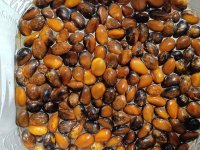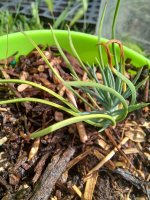Desert O'Piñon
Omono
A trip to NW Kansas took me through eastern New Mexico and Colorado. I was able to collect several dozen piñon nuts from a rest area. (A small handful of juniper berries as well.) This excited me, as this is one of the few species that is native here.

The float test for seed viability has yielded 0% sinkers. Although this isn't the result I should get, it seems unlikely that out of around 100 seeds none of them are viable. So, because it is not 100% accurate, I will continue as if they all have a chance to germinate. After soaking for a day, I plan to stratify them in dampened paper towels contained within plastic baggies until spring, when I intend to plant them in pots in a very sunny area, probably late February.
I am daring to hope that these seeds choose to germinate and grow into beautiful thriving trees.

The float test for seed viability has yielded 0% sinkers. Although this isn't the result I should get, it seems unlikely that out of around 100 seeds none of them are viable. So, because it is not 100% accurate, I will continue as if they all have a chance to germinate. After soaking for a day, I plan to stratify them in dampened paper towels contained within plastic baggies until spring, when I intend to plant them in pots in a very sunny area, probably late February.
I am daring to hope that these seeds choose to germinate and grow into beautiful thriving trees.





